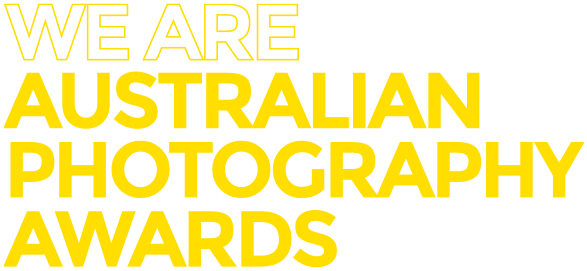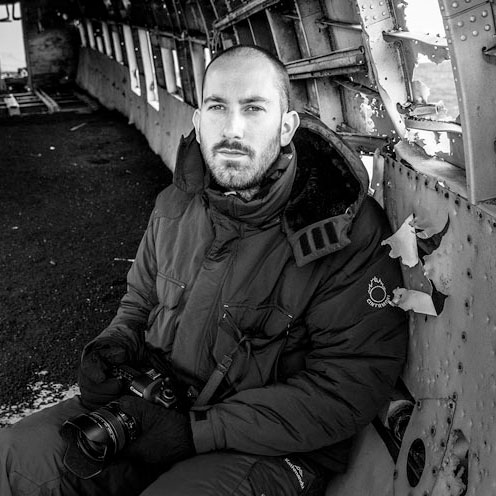with Matt Palmer
Hey Matt, can you tell us a bit about yourself and where you’re from?
I’m a photographer passionate about finding and capturing the dramatic, whether it be a blizzard over a small shack in Iceland or a Muay Thai fighter landing the perfect strike in the ring. I tend to gravitate towards interesting subjects for a period of time, until I feel I’ve expressed myself creatively, and then source new inspiration. Outside of photography, I am a fairly dead-pan, dark-humored fellow with a deep love of animals.
How did you develop an interest in photography?
I had always taken photographs even as a child, but honestly, they were pretty bad. Photos of crabs or the beach took on an old film camera, handed over for processing, and the one photo that was even half decent would come back with a GREAT SHOT sticker on it. It wasn’t until many years later, working as a graphic designer, that I renewed my interest in photography and took it seriously. During the day I would be photographing sick and injured children for fundraising and promotional activity to raise money for research. By night I began photographing the musicians I was going to see anyway. This developed into a bit of an obsession as I photographed musicians for about 12 years, everyone from Metallica to Sia. Being able to marry my interests together really cemented my ongoing love of photography and I recommend that emerging photographers focus on subjects they already have a love for.
How did you capture three of your best images?
It’s pretty difficult to narrow down to my three ‘best’ images given that I shoot across genres so often, so I’ll share three images I like a lot!
This is a spontaneous portrait of Muay Thai fighter Rhys Lightning and his corner team. To me it portrays a family unit, with family being the people you choose, the people that advise you and protect you. I felt very blessed to capture this moment. The venue was extremely dark and often corners can be quite chaotic, so lining up the different personalities into a pleasing composition can be a challenge, especially when your movement around the ring can be restricted. To me, there are so many small elements in this photograph that make it special. From the fingernails on the back of the fighter’s neck showing genuine care and protection, the stilettos on the fighter’s coach, the sparkly thongs and guarded stare from the back, and the man leaning forward holding ice with the word TITLE on it, as well as the gloves with the PUNISH brand. The photo has so many symbols. I was very happy with it finishing third in the APA People category in 2016, the same year I won the APA Travel and Documentary Category.
This is a photograph of a lighthouse in Iceland’s bitter winter, shot from the window of a Cessna flying through snow. The world has so much texture and colour to appreciate from above. Combined with the new accessibility of technology such as drones, we are seeing more and more of our planet’s features taken from above, revealing new secrets for us. Although not captured in this photograph, Iceland can be delightfully colourful from above, even in the whitest of winters. I was extremely happy to fly with my friend Haraldur Diego of Volcano Air while there last. When capturing photographs from the air, one must ensure to have their focus set perfectly to infinity (many lenses allow you to go past infinity, which results in soft images), and choose a fast shutter speed that offsets the movement of the aircraft. Communication with your pilot is everything as they will help maneuver you into position to compose your photograph.
Not one of my best shots but one I really appreciate. Coming to Tasmania I was determined not just to photograph the obvious, but to capture the hidden landscapes too. I have been exploring Tasmania with a macro lens, capturing interesting patterns and formations of lichen in a way the human eye can’t see without assistance. This capture of lichen on a rock at Kunanyi (Mount Wellington, Hobart) is almost a natural reflection of Indigenous art style, with dots of raw earthy tones creating the scene. To capture these scenes I also use an on-location studio light to help raise the exposure so I can have a greater depth of field, capturing more detail.
As an award-winning photographer, do you feel entering competitions has helped to progress your career?
I find a lot of value in awards, especially well run ones like the Australian Photography Awards. When people ask me about the impact of winning a major award, I typically remind them that even Olympic gold medalists are forgotten by the public soon after their achievements – until they win a few. I think consistency, entering reputable awards frequently, exposing yourself to the feedback of your peers, and pushing yourself in ‘competition’ can all be positive in producing better quality work and also raising your profile in the industry. Winning awards has connected me to companies that have supported my work on specific projects, such as Canon Australia and ProTog, and also helped me create a network of my peers who I can rely on for advice. APA offers some really exceptional prizes and is extremely well run. If I were not judging the competition, I would still be entering, without a doubt!
What made you select the image that won our 2016 Travel and Documentary Category?
The photograph that I selected that won the 2016 Travel and Documentary Category has a lot of visual impact. Fight photographs often don’t make a feature of the officiating, so I thought it was great that the referee Brad Vocale was such a huge part of what makes it a successful capture. He is an excellent referee and people like him make the sport as safe as possible by protecting fighters when they are unable to protect themselves. In this moment he is instructing the fighter that he must defend himself intelligently or he will step in, a rule all fighters are familiar with. The intensity of the fighter Hale Vaasa we see striking is monstrously scary and I think we can all relate to the fighter on the left, wanting to weather the storm! The photograph is shot through a chain-link cage which forms the little bokeh highlights throughout the photograph. This is an element that can’t be avoided when shooting in these conditions, so I make it work for me wherever I can! I was very honored to win the category with this photograph in APA’s inaugural year.
As one of our fantastic judges for APA 2018, what do you feel makes a winning image for APA?
I think bravery makes for a winning image for APA. I want to reward photography that takes chances, tries new things, and excites. So if you are holding onto a photograph thinking to yourself that it’s too different than what has won in the past to enter, you may be holding onto exactly what I’m looking for!
What is the most memorable experience you’ve had while photographing?
Just too many to even think about! I’ve been so lucky working on various projects, from shooting in raging blizzards in Iceland documenting abandoned homes, to interviewing 40 diverse representatives of Brisbane’s Muslim community. That later experience was a great one and I learned a lot from such a varied group of individuals that were so giving of themselves. Rajab was one of the project’s participants. He was a familyless African Refugee who eventually arrived in Australia, learned English, and became a water engineer due to his passion and experiences around the importance of fresh water being available for all. He also told me ‘never underestimate the relationship you may have with a stranger’, after being saved by a stranger in a refugee camp as a child. It’s a motto I’ve tried my best to take on board since the project!
Website: www.visualworld.com.au
Instagram: www.instagram.com/mattpalmerphoto/
Facebook: www.facebook.com/visualworldaus/



